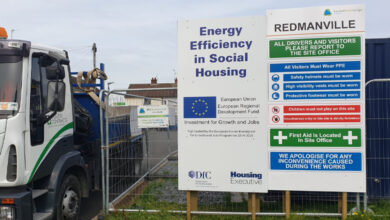ESA update
Peter Cheney analyses the continued delay in setting up the Education and Skills Authority.
Almost eight years after the Education and Skills Authority (ESA) was proposed, its preparations are being held up by the increasingly tense relationship between the DUP and Sinn Féin.
When Northern Ireland was formed in 1921, its first education authorities were the city and county councils. Their role was then taken on by five education and library boards in 1973: Belfast; North Eastern; Western; Southern; and South Eastern.
The Review of Public Administration was started by David Trimble and Mark Durkan in 2002 but the first decisions were taken under direct rule in March 2006. A single Education and Skills Authority was proposed by then Secretary of State Peter Hain, with a view to setting it up by April 2008.
The decision was reaffirmed by Caitríona Ruane but the Programme for Government extended the deadline to 2009. Ruane’s subsequent Education Bill was introduced in November 2008 and moved the target date back to January 2010.
A lack of trust between the DUP and Sinn Féin delayed progress. The status of the main Protestant churches (transferors) was one of the most contentious areas. The Presbyterian Church, Church of Ireland and Methodist Church had transferred their schools to the state in the 1920s and 1930s. In return, they were granted the right to appoint school governors in controlled schools and some members of education authorities.
When the 2010 deadline was missed, Ruane started to make savings by reducing the staffing of the existing education and library boards. While the savings were directed to front-line services (in the classroom), they effectively cut the funding for support services such as educational psychology.
The Education Bill fell when the Assembly was dissolved in March 2011.
John O’Dowd initially had a better working relationship with the DUP and the new Programme for Government promised to make the ESA “operational” in 2013.
The two main parties announced an agreement in November 2011. This protected the rights of the churches and allowed for a sectoral body to represent (mainly Protestant) controlled schools.
A new Education Bill was only agreed by the Executive in September 2012.
Ulster Unionists have strongly criticised the DUP for agreeing to the Bill, claiming that it will take power away from voluntary grammar schools and centralise the system under the Minister’s control. This position reflected the views of the voluntary grammar sector’s Governing Bodies Association and has subsequently been adopted by the DUP.
The level of trust between Sinn Féin and DUP has also deteriorated over the last year.
On 24 September, John O’Dowd indicated that the Education Bill was being “blocked on an issue concerning the needs of a small minority of schools.”
There are currently 51 voluntary grammar schools, founded either by the Catholic Church or independent trustees. They make up 6 per cent of schools but they educate 34 per cent of post-primary pupils (49,000 in total).
The DUP has also protested that the Minister plans to end funding for the working group which is planning the controlled schools sectoral body. O’Dowd contends that there would be no point in funding the body beyond December if the Bill had not proceeded by that point.
The Assembly’s current mandate ends in March 2016, which theoretically allows another two years in which to set up the ESA. The long delays and continued political divisions, though, give few signs of hope that it will take shape.






